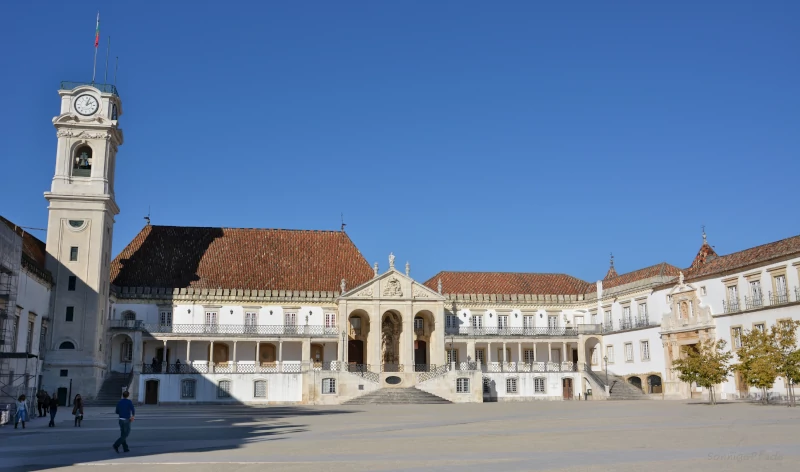
The city of Coimbra is located in the Portuguese region „Centro“ on the river Mondego. It is not so much a tourist center in Portugal, but Coimbra is worth seeing. Especially the traditional university has shaped the city and is possibly a destination for Erasmus – students from all over Europe.

A Roman settlement was the beginning of Coimbra
Traces of settlement in the Mondego region date back to the Celts. But the urban history of Coimbra probably began with the construction of a place called Aeminium. The new city was located on an important Roman road from Olisipo to Bracara Augusta. Today, locals would translate that as Lisboa (Lisbon) and Braga. The most important remains of the Romans are an aquaduct and the foundations of the Forum Cryptoporticus under the Museo Machado de Castro.

In 711, the Moors took over the rule of Coimbra and stayed there until 878, but they did not succeed in reestablishing a stable power in Coimbra. There were conquests and retreats until 1117, when the Moorish rule in the region finally came to an end.
After 1139, Coimbra even became the capital of Portugal for about 115 years.
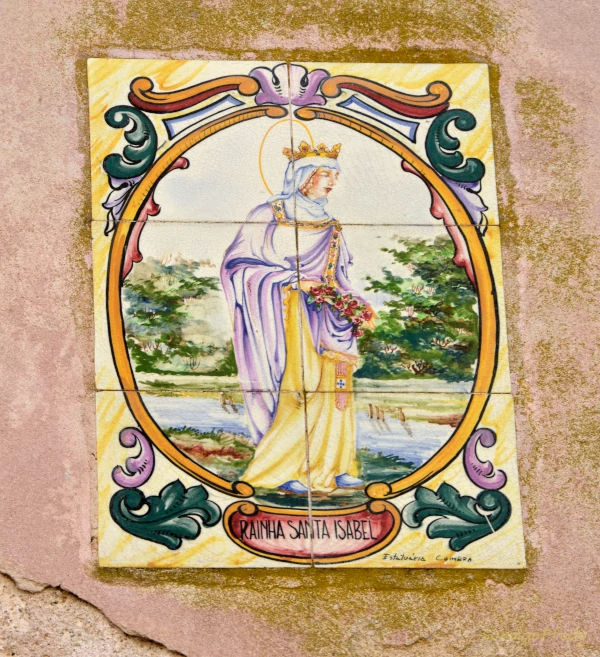
Oldest university in Portugal
After Coimbra’s importance had declined significantly with the relocation of the capital to Lisbon, the founding of the university became a defining event for the city. For in 1290, universities were still quite rare throughout Europe – in Portugal, King Dom Dinis provided a novelty with the new foundation. Coimbra became the first university city in Portugal. The influence of the university can still be felt in Coimbra today. Many students are on the move and also influence the cultural life of the city. Even festivals have developed out of student traditions. For example, at the beginning of May, the big student festival Queima das Fitas shakes up everyday life in Coimbra for a week – there are a lot of live concerts and the big highlight is a street parade in which all faculties and academic departments participate.
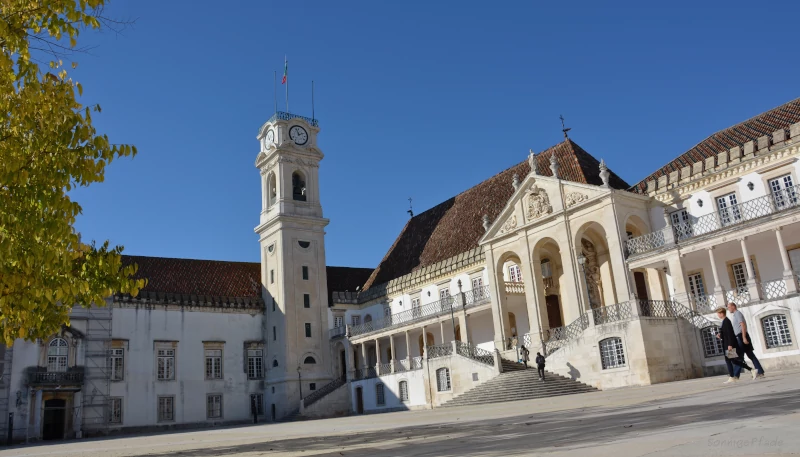
The historic campus towers over the old town hill
The university is also the defining building – ensemble on the hilltop north of the Mondego River. If you visit Coimbra, you should definitely see the baroque campus with the distinctive clock tower. Worth seeing at the university are the large festival hall „Sala grande dos Actos„ and the Capela Sao Miguel. The historic „Biblioteca Joanina“ with galleries, golden decorations and a stock of 250000 books on huge shelves is also worth a visit. Since 2013, the University of Coimbra is a World Heritage Site.
It is interesting that in Coimbra already since the 16th century many students live in student housing communities, so-called „Republicas„.
The new buildings of the dictator Salazar
During the Estado novo – period of the Salazar dictatorship in Portugal, the campus of the university was expanded in the forties with extensive new buildings, monumental statues and an open staircase. Salazar himself had studied in Coimbra and was a professor at the university for some time. The new building – area is located next to the old campus and awakens at least for me ambivalent feelings. Because this architecture with its strict lines, bulky buildings and the oversized „hero figures“ makes the open space somehow a „parade – square“, which does not particularly entice to stroll. For this part of the university, parts of the old town were demolished at the time.
To the whole complex on the mountain also belongs the newer cathedral „Sé Nova“.
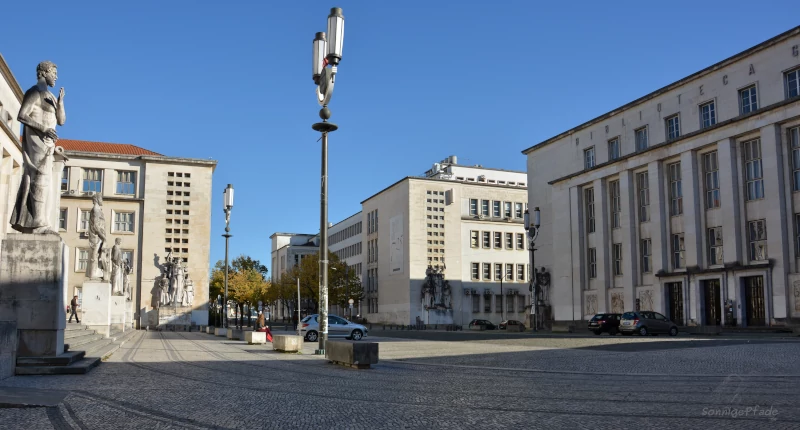

Old town on the hill in Coimbra
West of the University of Coimbra are the streets of the old town. Here you must be good on foot, because it goes over irregular cobblestones through the alleys. The most prominent building in this district is the fortress-like old cathedral Igreja da Sé Velha from the 12th century. It is closely surrounded by the houses and alleys of the old town, at least on two sides. Holy water basins in the cathedral Sé Velha have shell shape. The late Gothic main altar is also remarkable.
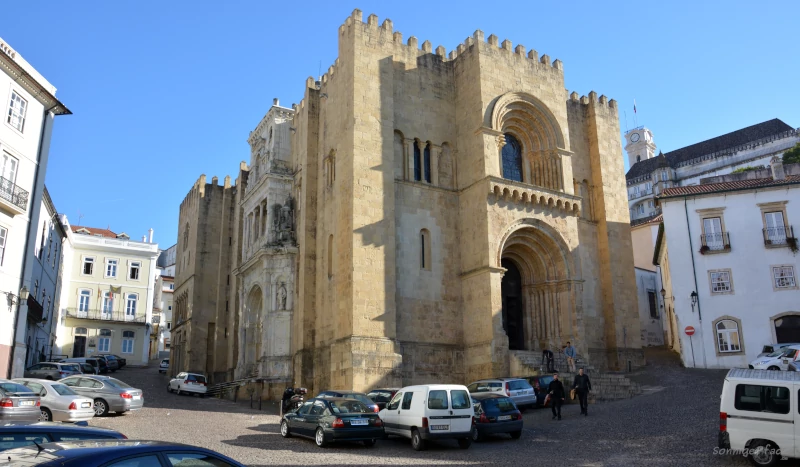
The long straight pedestrian street Rua Ferreira Borges separates the mountainous part of the old town from the western neighborhood of Sao Bartolomeu. Here, too, the area is traffic-calmed or pedestrianized, but here is the more commercial part with stores, restaurants and cafes. The Coimbra A terminus abuts this neighborhood on the banks of the Rio Mondego.
At the Praca 8 de Maio you will find the Santa Cruz Monastery. Right next to the church is the Café Santa Cruz, which was rebuilt around 1530 as a parish church. As a result of the „Liberal Revolution“ of 1822, the monastic orders were dissolved. This also affected the Santa Cruz Monastery in 1834, and the congregation moved to the larger monastery church.
The building of the parish church experienced a period of changing uses, such as a storage room, police station, mortician, fire station, horseshoe shop, etc., until about 1920, when a café was established for the first time. The luxurious establishment, in the style of a neo-Manuelite coffee house, was initially heavily criticized, as clerical circles objected to a café so close to the church and, moreover, in formerly sacred premises. But the café was popular with visitors from the beginning – literary figures and journalists met here. After the Carnation Revolution in Portugal in 1974, the Café Santa Cruz experienced a new boom with a mixture of female students and tourists as visitors.
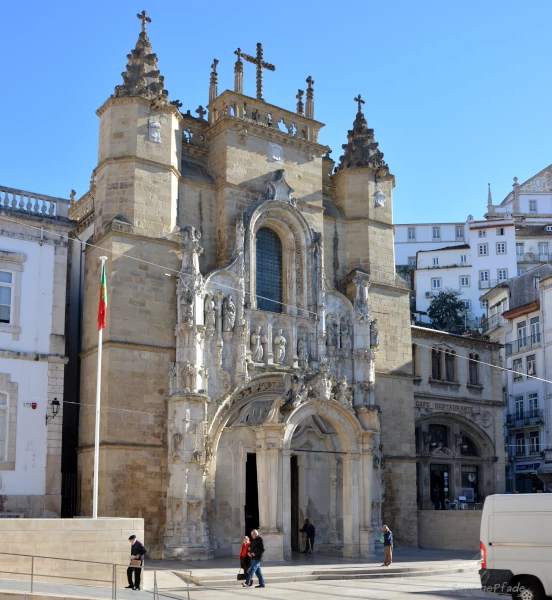
Things to see in Coimbra – museums, exhibitions, gardens
Known throughout Portugal is the tragic love story between the heir to the throne Pedro and his mistress Inés de Castro from the middle of the 14th century. The lovers met in the garden „Jardim da Quinta das Lágrimas“ in Coimbra. It was there that Inés de Castro was killed by order of King Afonso IV, who did not approve of his son’s love affair at all. Two fountains in the park commemorate the story – the Fonte dos Amores „source of love“ and the Fonte das Lágrimas, the „source of tears“.
With the Jardim Botánico, a botanical garden, Coimbra also has a collection place for exotic trees and plants in tropical houses from the 18th century.
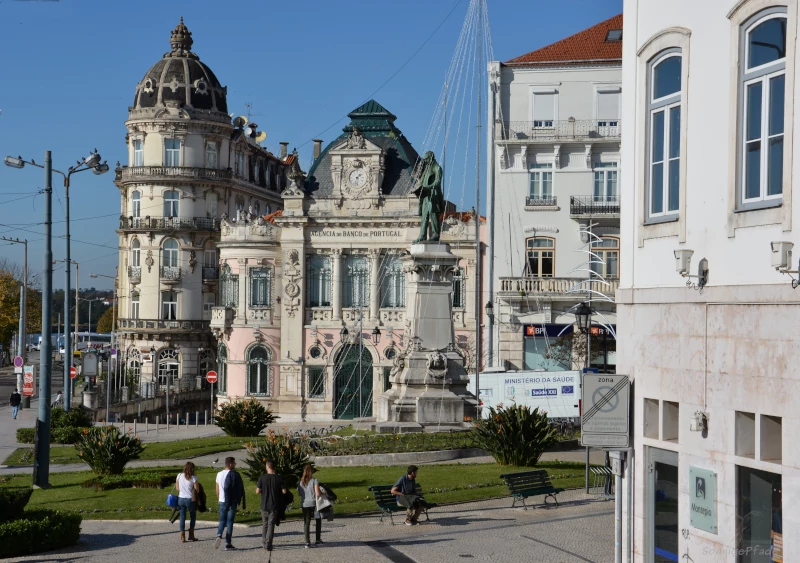
In the former bishop’s residence is the already mentioned Museu Nacional de Machado de Castro with an extensive art collection especially of treasures of the church. Machado de Castro was one of the most important Portuguese sculptors, born near Coimbra in 1731. Here you can also see the Roman cryptoporticus. museumachadocastro.gov.pt
The art collection of the Telo de Morais family is presented in the Museu Municipal – Coleccáo Telo de Morais Municipal Art Museum. This includes 19th and 20th century Portuguese paintings, ceramics, furniture and sculptures.
Worthwhile for music lovers can be an evening visit to the 14th century chapel Nossa Senhora da Victória. For in the establishment, now called Á Capella, fadistas perform every evening with their typical portugese fado – songs. A reservation is absolutely necessary here. The city is, after all, with the „Fado de Coimbra“ listening place of a regional variety of Portuguese Fado – this is considered „stricter“ and is performed only by men. www.acapella.com.pt
Boat trips on the Rio Mondego
If you like, you can take a boat trip on the Mondego River with O Basófias in the afternoon. www.odabarca.com
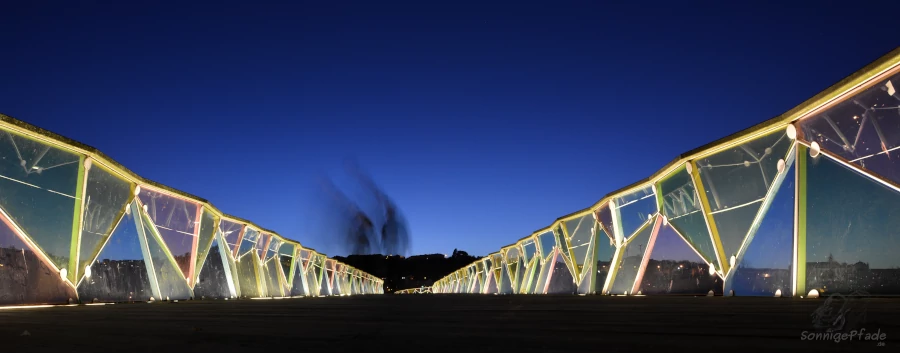
Travel tips for Coimbra in Portugal
[Contains *advertising]
Arrival
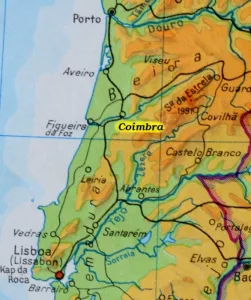
Tips for traveling to Portugal are provided in the linked extra – article. The journey from within Portugal can be made by train or by long-distance bus with the „Rede Expressos“. The long-distance train station Coimbra B is located just outside the city and is served by the trains of the Linha norte. Among them are also the express trains of the alpha pendular. Regional trains go to the terminal station Coimbra A directly at the old town quarter Sao Bartolomeu.
From Lisbon as well as from Porto the journey with the Rede Expressos long-distance bus is comfortable and fast. The bus station is also on the edge of the Sao Bartolomeu district. The bus connections can be found out and booked online in advance via omio*.
Coimbra is also easy to reach by car or rental car*. The city is located on the A1 north-south highway from Lisboa to Porto, and the A14 from Figueira da Foz intersects with the A1 near the city.

Bathing near Coimbra
Coimbra is located about 50km east of the mouth of the Mondego River into the Atlantic Ocean. If you want to see the beach and the sea after your city tour, you should go to Figuera da Foz on the Costa de Prata. North of the river mouth, wide beaches begin along the coast to the village of Buarcos. In Figueira da Foz you will find the party life and water sports, while the villages further north offer more peace and relaxation.
Nature in the forest park
Northeast of Coimbra is the forest park Bosque Sacro in the Parque Nacional do Bucaco. An incredible variety of trees and plant species have been planted here, mainly by Carmelite monks.
Coimbra Accommodation
In the best of hands – quality accommodation in Coimbra
Hotel Quinta das Lagrimas*****
A palace in the middle of a small park houses the Hotel Quinta das Lagrimas* and its guests. But not only a historical ambience, but also modern luxury with wellness and pool make the stay in this hotel a pleasant experience. In the restaurantes dishes with regional ingredients of the season are offered. In addition, there is a choice of exquisite local wines. With Bamboo Garden Spa, massages, Turkish bath, and fitness center, everyone will find their options for physical exercise. Among the room offerings, guests can choose historic palace rooms or body-friendly spa rooms. The facility is partially suitable for wheelchair users. Parking spaces, some of which are handicapped accessible, are available.
Sapientia Boutique Hotel****
Directly at the old town and the top – sights of Coimbra is the Sapientia Boutique Hotel*, which not only four stars, but also best reviews from guests distinguish. Various rooms for 2 to 4 guests, also family rooms are offered here. Breakfast is available from the buffet, optionally also a lá carte. The rooms on the upper floors are also accessible by elevator.
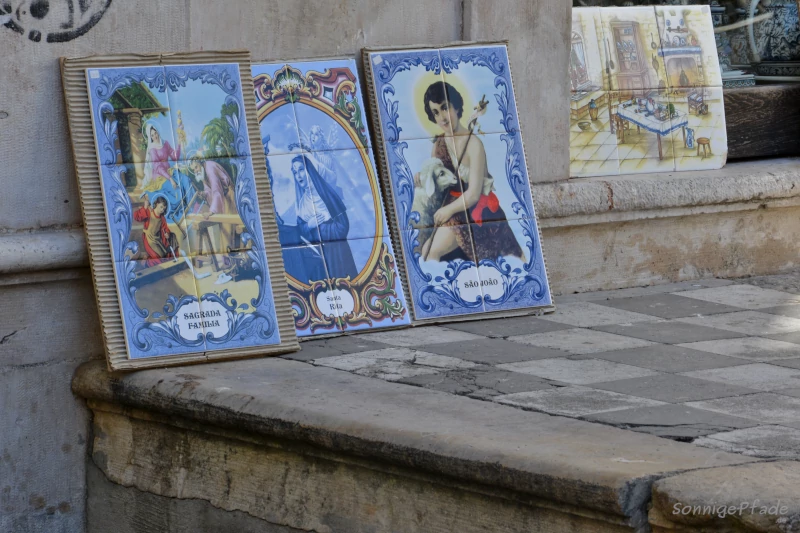
Other places to stay in Coimbra
Hotel Botanico**
The Hotel Botanico* is located very close to the large Botanical Garden and the University of Coimbra. The modern air-conditioned rooms are designed for two to four guests, and there is also a family room. Breakfast is included. There is a snack and beverage vending machine on the premises. Upper floors are accessible by elevator.
Guesthouse Santa Clara
Guesthouse Santa Clara* is on the south side of the Mondego River, about 800 yards from the old Sé Velha Cathedral. It’s 1000m to the historic Café Santa Cruz. Some of the air-conditioned rooms with fridges allow views of the river or the old town. Good guest reviews also go to the comfortable beds. Free parking is available to guests.
Sophia Residences
Studio apartments in a historic Old Town building in Coimbra, the Sophia Residences* give you room to personalize your stay in this city. The studios have well-equipped kitchens, and coffee and tea facilities are freely available. It’s about 400m to the old Sé Velha Cathedral. Access is via door codes, requests and service largely by phone, mail or social media.
budget in Coimbra – Hostels
HI Coimbra Pousada de juventude
The cheapest accommodation in Coimbra at the moment is the Youth hostel Pousada de juventude* of the Hosteling International chain. These hostel offers double bunk beds in gender-separated dormitories with shared bathrooms. Included in the low overnight price is also a simple breakfast. Coimbra’s old town is about 1km from the hostel.
Olive Street house
A bit more expensive, but closer to the old town (it’s only 300m to the Sé Velha Cathedral) is the Olive Street House*. This privately run hostel offers dormitory or private rooms for two to three people. A communal kitchen can be used. The landlady also takes care of luggage storage on arrival and departure. Only 100m away is the famous Café Santa Cruz.
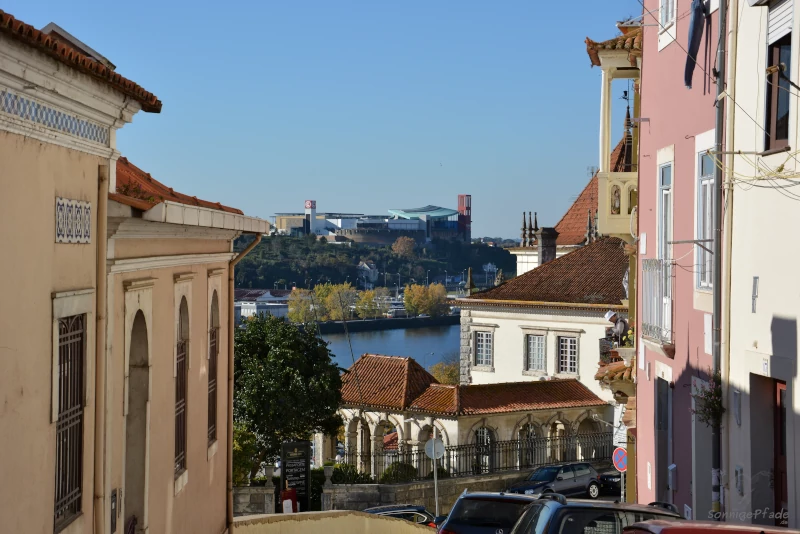
The Coimbra weather and the outlook
The weather forecast for Coimbra today is shown in the graph on the left. In addition, a weather – outlook for the next three days.
You like Coimbra?
Then share the link to the post with your friends in your social media channels!
Note on * advertising links
The links marked with * refer to booking platforms or online stores. If you order something through such a link, the „Sunny Paths“ blog get a small commission, which helps to compensate the effort of these sites. For you nothing will be more expensive, because the commissions are already taken into account in the pricing of the providers.
Advertising:
Source of product pictures: Vendor/ Producer




